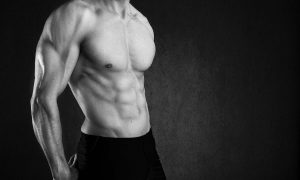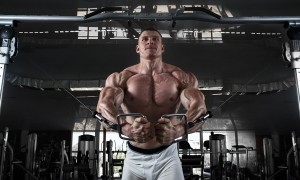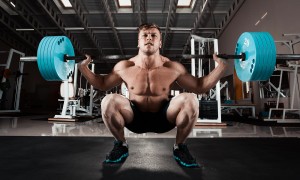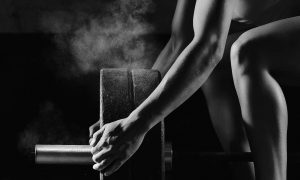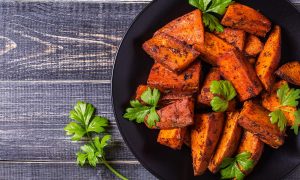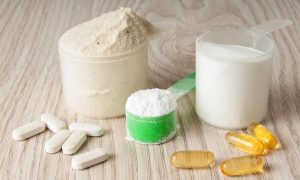Why Do Our Muscles Get Sore After A Workout?
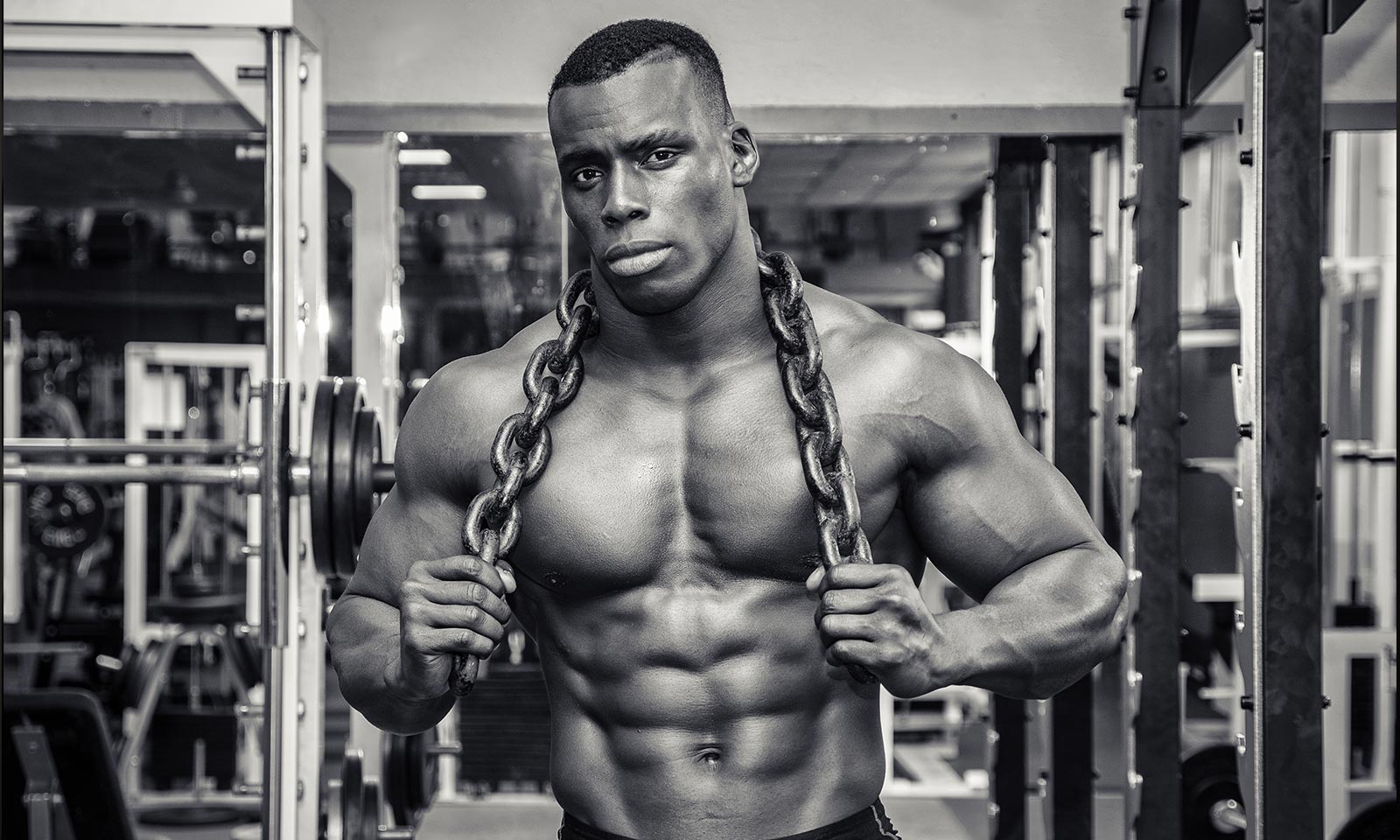
|
|
You’ve all heard the express “No Pain No Gain” and whilst this sort of saying can perhaps be a little misleading, it’s actually far more accurate than many people tend to realise. If you bust your butt in the gym, week in and week out, constantly pushing your body to its absolute limits in a bid to get one more rep or lift a slightly heavier weight, then you’ll quickly begin seeing improvements and will be reaping the rewards before you know it. However, one potential downside to really pushing yourself in the gym, or wherever else it is that you happen to exercise, is that following the workout you’ll feel tired and your muscles will ache, and the next morning when you wake up, your muscles will be particularly sore, perhaps even painful in some cases (those of you who train legs will be able to relate to this). Whilst sore muscles are a good sign of a productive workout, they can actually hinder your progress with your next training session. What exactly is it that causes our muscles to get sore after a workout, why does it happen, and are there any ways of preventing/reducing the amount of pain we suffer after pushing ourselves in the gym? Well, let’s take a more in-depth look shall we?
First off, is there a technical name for sore muscles following exercise?

Yes, sore, stiff, tender, and aching muscles following a workout, is referred to as DOMS, which stands for Delayed Onset Muscle Soreness. It is a general discomfort and pain found within your muscle tissue that is caused partly by a build up of lactic acid, which is responsible for painful muscle cramps, as well as actual physical damage to your muscle tissues. One common misconception that people tend to have about exercising and working out, particularly bodybuilding and training specifically for muscle growth, is that muscle is built in the gym by lifting weights. This is not true, and in fact the exact opposite occurs. By lifting heavy weights in the gym and pushing our muscles to their absolute limits, we most certainly aren’t building muscle, we’re instead damaging and breaking down our existing muscle fibres and tissue. We build muscle when we rest, or rather, our bodies build muscle for us when we rest. Following an intense physical workout, you will have put your body under a great deal of stress and discomfort and will have damaged your existing muscle tissue. The body then panics, and thinks to itself that it doesn’t want to have to endure that again, and so it rebuilds your muscle tissue even bigger and stronger than it was previously, in a bid to better be able to withstand prolonged and intense physical activity, which is why it’s so important that we continue to progress with our workouts so that we don’t hit a plateau and allow our bodies to become resistant. Basically your sore muscles are your bodies way of telling you that your muscles have been put under intense physical stress, and that they’re slowly healing, which is exactly what you want.
How about acute soreness?
As well as DOMS, there is also what is known as acute soreness. Whereas DOMS is delayed for between 12 – 48 hours on average, acute soreness takes place during and immediately following your workout. Both forms of soreness have very similar symptoms including slight inflammation, stiffness, tightness, soreness, slight pain, and a restricted range of motion.
What exactly causes muscle soreness?

Yes, ok, we know we’ve already said that muscle soreness is caused by exercise and damage to muscle fibres and tissues, but let’s delve a little deeper and get a little more technical and scientific about the entire process. Using weight training as an example, when we lift weights, providing the weight/number of reps are enough to really test your body, this will result in micro rips and tears within your muscle fibres, which will, provided you get enough rest and the right nutrients, heal themselves into bigger, stronger, denser, and more efficient fibres. As the natural healing process occurs, that’s where the soreness comes into the mix. If these muscle fibres are forced to carry a heavy load, the tiny fibres that make up the muscle will buckle, tear, and rip. Imagine picking up a grand piano using a thin piece of string and you get a rough idea. In order for the body to repair itself however, it requires rest, plus a selection of different nutrients including protein, amino acids, and various minerals such as calcium. DOMS however, can be especially useful to determine whether or not a workout has been effective or not. Say you train chest, you go to bed, and wake up the next day with a sore chest, that’s a pretty good indication that you’ve stimulated some new growth within the pecs. If you wake up pain free, or perhaps with sore shoulders instead, you’ve either not pushed your body hard enough, or your form has been that poor that your shoulders have seen more of a benefit on chest day than your actual chest.
Common myths about DOMS
As we all know, anybody who’s ever stepped foot in a gym or has read a health and fitness magazine is obviously an expert on absolutely everything health and fitness related that there is to know, so of course DOMS are often the subject of many a heated debate and there are many myths surrounding DOMS that need to be cleared up sooner rather than later. To help you get a better understanding about muscle soreness, and to shut up the next person who tries to tell you that your sore muscles are a sign you should stop exercising, take a look at these common myths surrounding muscle soreness, particularly DOMS.

DOMS are caused solely by lactic acid – This is not true, yes, muscle soreness is caused partly by lactic acid build ups, but it is certainly not caused solely by lactic acid build up. When we exercise, our bodies require energy which means they have to break down certain molecules to get it. This natural metabolic process causes our cells to turn more acidic, which in turn causes a burning sensation within the muscles. This isn’t caused by the lactic acid however, as lactic acid is a by-product of energy metabolism and actually works as a buffer and reduces the rate in which our cells turn acidic.
If you’re sore, your body wants you to slow down – No, this is not true. If you’re sore, this is a sign that you have stimulated new growth and that your body is busy repairing your damaged muscle fibres so that they become even bigger and stronger than before. It’s important to distinguish between muscle soreness, and muscle pain. If you’re in physical pain whilst exercising, that is a sign of a more serious injury and is a sign that you should slow down, but if you’re sore, you can, and should, still train.
You shouldn’t damage your muscles – You could literally have the most muscular, ripped, and athletic looking individual in the world, and an out of shape guy who thinks he knows everything in the same room, and the out of shape guy would still tell the ripped dude that damaging your muscles is a bad thing and that if they’re painful you should stop. The reason why the ripped dude is so big and ripped is because he damages his muscles several times per week, which is how he is able to stimulate new muscle growth and repair. Again, slight damage so that the muscles are sore is necessary, real training injuries such as torn or pulled muscles however, are not, so it’s important to know the difference between soreness and pain.
How to reduce muscle soreness

As you can probably tell, muscle soreness is now pretty necessary if you want to build new muscle and improve athletic performance as well as your own physique. This doesn’t mean that it’s always pleasant because if you’ve tried sitting on the toilet or walking up and downstairs after barbell squatting on leg day, you’ll know just how uncomfortable leg DOMS can be. Here are a few handy tips to help you reduce muscle soreness:
Topical treatments – If you apply menthol-based topical treatments such as deep heat, freeze sprays, or Tiger Balm, to your sore muscles, and massage it in well, you’ll be amazed by the difference that these treatments can make. Some studies have found that menthol topical creams and balms can help reduce muscle soreness by over 60%.
Ice baths – Ok, this is pretty extreme but if you can tolerate it, an ice bath is one of the most effective ways of reducing muscle soreness, and of helping to increase muscle growth and rates of recovery as well. Think about it, when you pick up an injury, you ice the injury as it reduces pain and inflammation and speeds up the healing process. If you submerge your whole body, or even the sore body parts under icy water for a few minutes, you’re basically giving yourself the best ice-pack possible.
Caffeine – Caffeine is a stimulant which many of us rely on in a morning to help us wake up, but in reality it’s about so much more than that. Recent studies have found that caffeine can also reduce DOMS which suggests that the stimulant actually speeds up and increases the recovery process.
References: https://www.ncbi.nlm.nih.gov/pubmed/24164961

